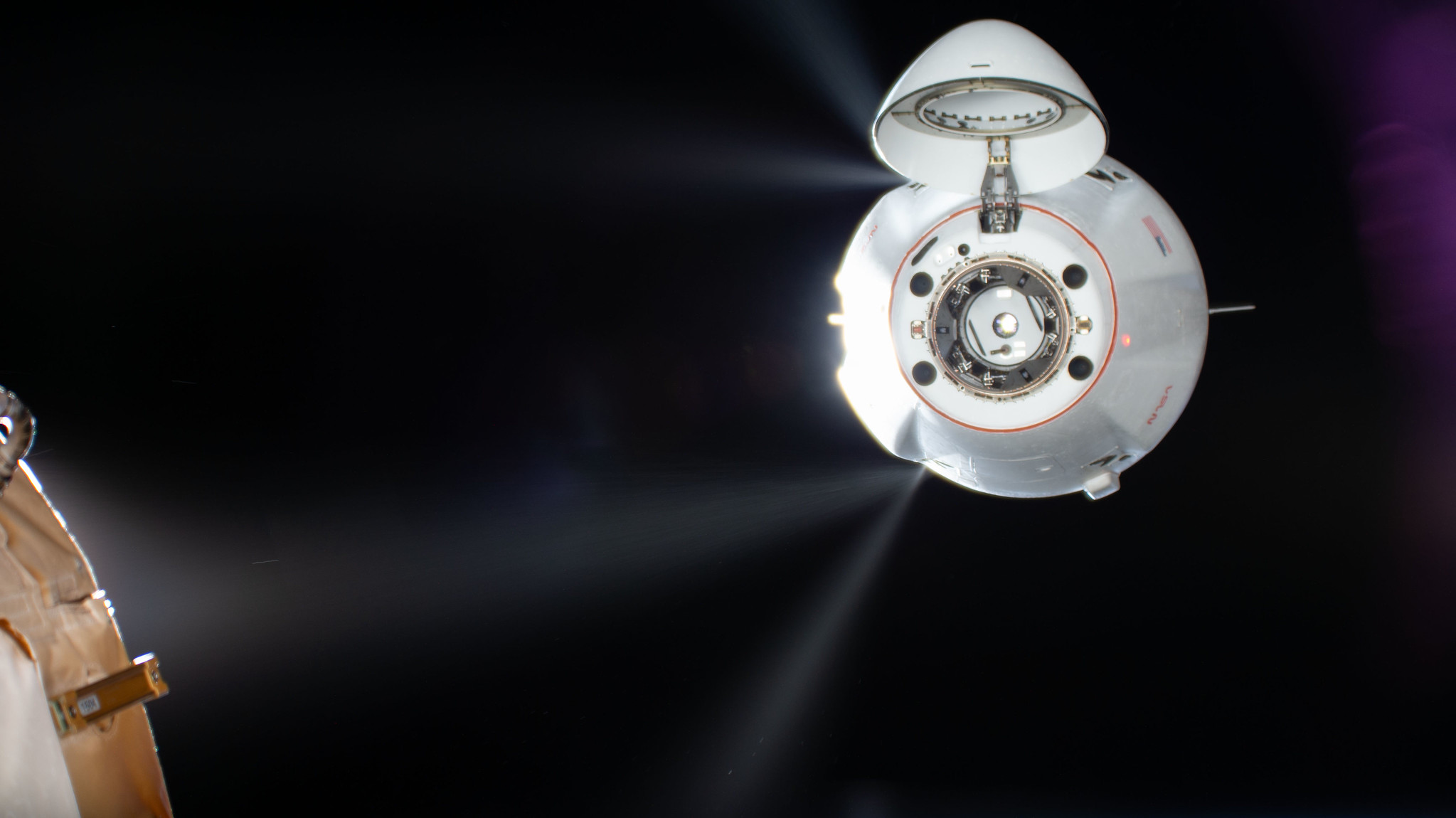Editor’s note: This advisory was updated on Dec. 22, 2023, to correctly reflect the name of NASA’s processing facility in Florida.
Editor’s note: This advisory was updated on Dec. 20, 2023 to reflect NASA and SpaceX now are targeting no earlier than 5:05 p.m. EST Thursday, Dec. 21, for the undocking of the company’s 29th Dragon commercial resupply services mission from the International Space Station due to unfavorable weather in the splashdown zones off the coast of Florida.
NASA and its international partners are set to receive scientific research samples and hardware as a SpaceX Dragon cargo resupply spacecraft departs the International Space Station on Thursday, Dec. 21.
The agency will provide live coverage of Dragon’s undocking and departure starting at 4:45 p.m. EST on the NASA+ streaming service via the web or the NASA app. Coverage also will air live on NASA Television, YouTube, and on the agency’s website. Learn how to stream NASA TV through a variety of platforms including social media.
Dragon will undock from the station’s Harmony module at 9:05 p.m. and fire its thrusters to move a safe distance away from the station after receiving a command from ground controllers at SpaceX in Hawthorne, California.
After re-entering Earth’s atmosphere, the spacecraft will splash down off the coast of Florida. NASA will not broadcast the splashdown, but updates will be posted on the agency’s space station blog.
Dragon will carry back to Earth more than 4,300 pounds of supplies and scientific experiments designed to take advantage of the space station’s microgravity environment. Splashing down off the coast of Florida enables quick transportation of the experiments to NASA’s Space Systems Processing Facility at Kennedy Space Center in Florida, allowing researchers to collect data with minimal sample exposure to Earth’s gravity.
Scientific hardware and samples returning to Earth include Planet Habitat-03, which assesses whether genetic adaptations in one generation of plants grown in space can transfer to the next generation. This is one of the first multi-generation plant biology studies in orbit.
Other studies include JAXA’s (Japan Aerospace Exploration Agency) Cell Gravisensing, an investigation that looks at how cells sense and respond to the effects of gravity. Results could promote drug development for treating muscle atrophy and osteoporosis.
Also returning on Dragon is Genes in Space-10, a student-led project that tests a method for in-orbit measurement of the length of telomeres, cap-like structures at the end of DNA strands that shorten with age, but have been found to lengthen in space.
Additionally, samples from MaRVIn-PCIM (Microgravity Research for Versatile Investigations-Phase Change in Mixtures) and Neuronix (Innovative Paralysis Therapy Enabling Neuroregeneration) also are returning to Earth for scientific analysis.
Dragon arrived at the station Nov. 11 as SpaceX’s 29th commercial resupply services mission for NASA, delivering about 6,500 pounds of research investigations, crew supplies, and station hardware. The spacecraft launched Nov. 9 on a SpaceX Falcon 9 rocket from Launch Complex 39A at NASA Kennedy.
These are just a few of the hundreds of investigations currently being conducted aboard the orbiting laboratory in the areas of biology and biotechnology, physical sciences, and Earth and space science. Advances in these areas will help keep astronauts healthy during long-duration space travel and demonstrate technologies for future human and robotic exploration beyond low Earth orbit to the Moon and Mars through NASA’s Artemis program.
Get breaking news, images and features from the space station on Instagram, Facebook, and X.
Learn more about the International Space Station at:
https://www.nasa.gov/international-space-station/
-end-
Julian Coltre
Headquarters, Washington
202-358-1100
julian.n.coltre@nasa.gov
Sandra Jones
Johnson Space Center, Houston
281-483-5111
sandra.p.jones@nasa.gov





























